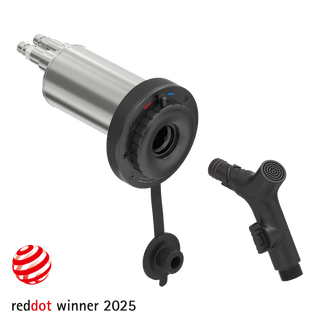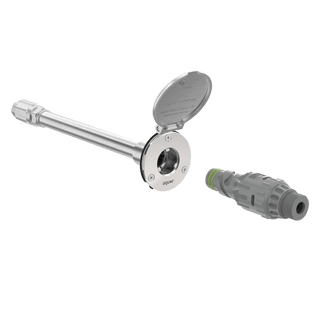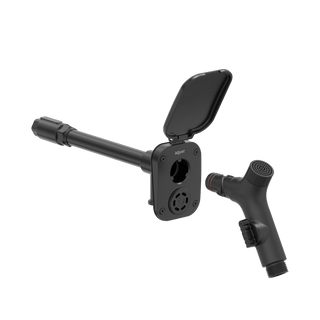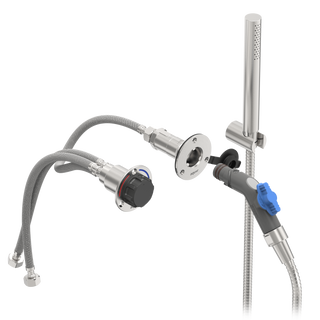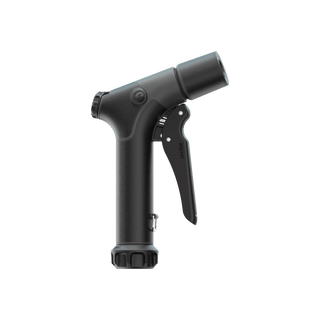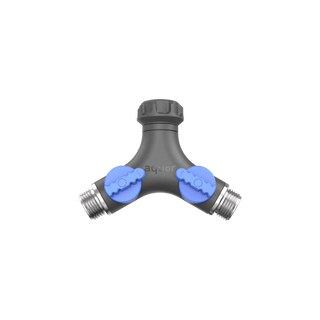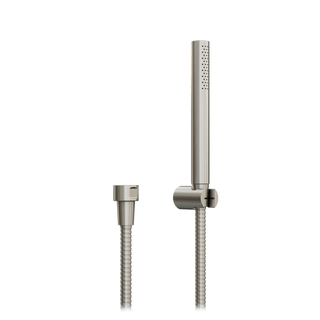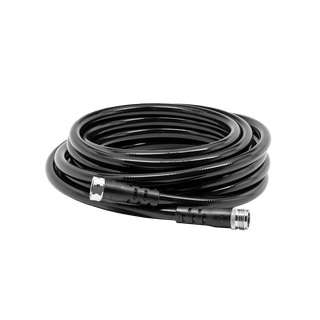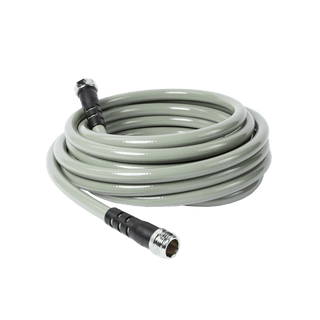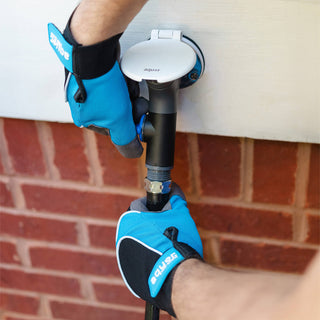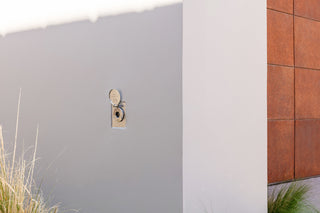A Beginner's Guide to Summer Gardening
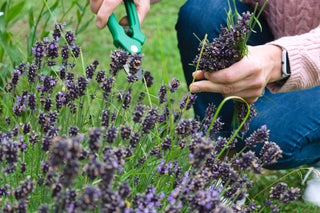
With cold weather well in the past, summer is often thought of as the peak season for gardening. The warm soil and consistent sunshine allow plants to thrive, so you can enjoy colorful flowers and fresh produce.
Successful summer gardening will require some planning and thoughtful execution. Spring is generally the best time to begin planting what you want to grow during the upcoming months. Let’s explore how you can get the most out of your summer gardening experience.
Planning your summer garden
Begin by planning the layout of your garden. Which plants are you interested in growing? And where do you want to grow each type of plant? These are important questions to ask yourself before moving forward.
After nailing down the basics you can solidify your plan. Make a final decision regarding which plants you want to cultivate in the summer and fall. Be sure to take into consideration your climate as well as the optimal growing conditions for each plant. Are your top choices most likely going to thrive? Or will they be difficult to grow based on the environment and your resources.
 Popular summer fruits and vegetables include tomatoes, peppers, berries, cucumbers, melons, and greens. Freshly picked, perfectly ripened food always tastes best! You'll have vibrant salads and picnic snacks ready to go.
Popular summer fruits and vegetables include tomatoes, peppers, berries, cucumbers, melons, and greens. Freshly picked, perfectly ripened food always tastes best! You'll have vibrant salads and picnic snacks ready to go.
Want more produce ideas? Read 10 Easy-to-Grow Fruits and Vegetables for Gardening Beginners.

If you're interested in amping up your flower power, sunflowers, peonies, carnations, yarrows, begonias, and lavender are common summery options. Clip a bouquet and share with your favorite neighbors or family members for instant brownie points.
You can learn more about 10 Easy-to-Grow Outdoor Plants for Gardening Beginners here.

Once you decide which plants you want to grow, it’s time to actually prep your garden.
Preparing your garden for summer
Before planting, it’s a good idea to clear out space to make room for new garden members. Removing weeds and debris plus old seasonal plants will help ensure your garden is in an ideal state to cultivate a variety of new additions.
Preparing and testing the existing soil will be the next step. Plants have different soil and nutrient needs, so keep this factor in mind when choosing your plants' locations and pairing your new flora together. Adding compost to improve fertility is a key step to ensure the soil has enough nutrients for the upcoming season.
 Mulching can help with soil moisture retention, especially if you’re in a drier climate. In general, mulching helps create ideal growing conditions and prevents weeds. That being said, there are some disadvantages associated with mulching, such as preventing sunlight from reaching germinating seeds and creating a welcoming environment for some unwanted critters. It’s important to not over-mulch, as you could suffocate seeds.
Mulching can help with soil moisture retention, especially if you’re in a drier climate. In general, mulching helps create ideal growing conditions and prevents weeds. That being said, there are some disadvantages associated with mulching, such as preventing sunlight from reaching germinating seeds and creating a welcoming environment for some unwanted critters. It’s important to not over-mulch, as you could suffocate seeds.
Watering your plants in the summer
One of the most important aspects of gardening is understanding your plant's water needs. It’s very easy for plants to suffer from a lack of water as the summer heat constantly dries out the soil. It’s also important to make sure you don’t overcompensate and provide too much water. This can be avoided by researching each plant you’re planning to grow, so you know how much water is generally needed and avoid waterlogging the soil.
 Quick tips for watering plants:
Quick tips for watering plants:
1) Typically, the best time to water your plants is early morning. The plants will be able to absorb most of the water before it evaporates.
2) Avoid watering the leaves directly since leaves do not absorb water. Instead, water the soil by the stem and roots because that’s where the plant is actually taking in water.
3) As mentioned previously, mulching can help minimize water evaporation throughout the day and helps the soil retain some moisture.
Monitoring soil moisture levels is another option if you want to really ensure that all of your plants are receiving the proper amount of hydration. Tensiometers are devices that measure soil moisture tension. They are sealed, water-filled tubes with a porous ceramic tip at the bottom and a vacuum gauge at the top. So what does that actually mean?? You can read more about soil moisture here.
 Proper plant care in the summer
Proper plant care in the summer
Plant maintenance is arguably the most involved part of gardening. Here are a few key steps to keep in mind when caring for your growing plants:
1) Pruning is a great practice to help plants stay healthy. It’s important to trim off dead, diseased, or injured leaves and branches. This will help keep pests away from the plant, prevent further damage, and keep your plant looking fresh!
2) Providing support is often vital for plants that tend to grow vertically—not just moral support, we're talking physical support too! Plant support stakes will keep plants upright and prevent top-heavy or tall plants from falling over, especially during windy days.  3) It’s also necessary to understand the sunlight needs of each plant. Excessive heat over a prolonged period of time can cause plants to suffer from a variety of issues, such as stunted growth and flowering difficulties. You can protect plants from excessive heat with shade. Common shading techniques include utilizing a shade cloth and umbrellas, or even positioning sunflowers to shade the plants below.
3) It’s also necessary to understand the sunlight needs of each plant. Excessive heat over a prolonged period of time can cause plants to suffer from a variety of issues, such as stunted growth and flowering difficulties. You can protect plants from excessive heat with shade. Common shading techniques include utilizing a shade cloth and umbrellas, or even positioning sunflowers to shade the plants below.
More gardening tips
Before you set off on your summer gardening journey, we'd like to leave you with a few more green ideas.
 1) Integrating native plant species into your garden is a great way to start off. Native species tend to grow fairly easily, and planting native species has several benefits! We're talking low maintenance, minimal water needs, and smooth acclimation to the local climate. Plus, they help with local biodiversity!
1) Integrating native plant species into your garden is a great way to start off. Native species tend to grow fairly easily, and planting native species has several benefits! We're talking low maintenance, minimal water needs, and smooth acclimation to the local climate. Plus, they help with local biodiversity!
2) Setting up your garden to encourage pollinators and wildlife will support the ecosystem and overall garden health. Not to mention having beautiful butterflies and bees floating throughout your garden adds a sense of both life and peace. There are a few key factors to consider when creating a pollinator-friendly garden:
- Avoid using pesticides, as they are toxic to pollinators.
- Cultivating pollinator-friendly plants such as sunflowers, yarrows, daisies, and dandelions is a great way to invite beneficial local creatures.
- Grouping pollinator-friendly plants together will help pollinators travel from plant to plant with ease.
- Butterflies and bees get thirsty, so make sure to have a nearby source of water for them to take a drink. Butterflies can hydrate on exposed wet pebbles, while bees are able to drink from an open water source.
 3) Utilizing containers is a simple way to easily section off your garden for proper grouping and will help with the setup of shading structures. Containers are also convenient in the long run since they are semi-modular and allow for a flexible gardening experience.
3) Utilizing containers is a simple way to easily section off your garden for proper grouping and will help with the setup of shading structures. Containers are also convenient in the long run since they are semi-modular and allow for a flexible gardening experience.

Don't have a lot of space? Learn about the Best Plants for Indoor Spaces, Balconies, Decks, and Patios.
Read these general Water Conservation Tips if you're concerned about how much water you're using.
And if you need some basic gardening gear, take a peek at these cool utility gloves. Plus this ultralight garden hose.

